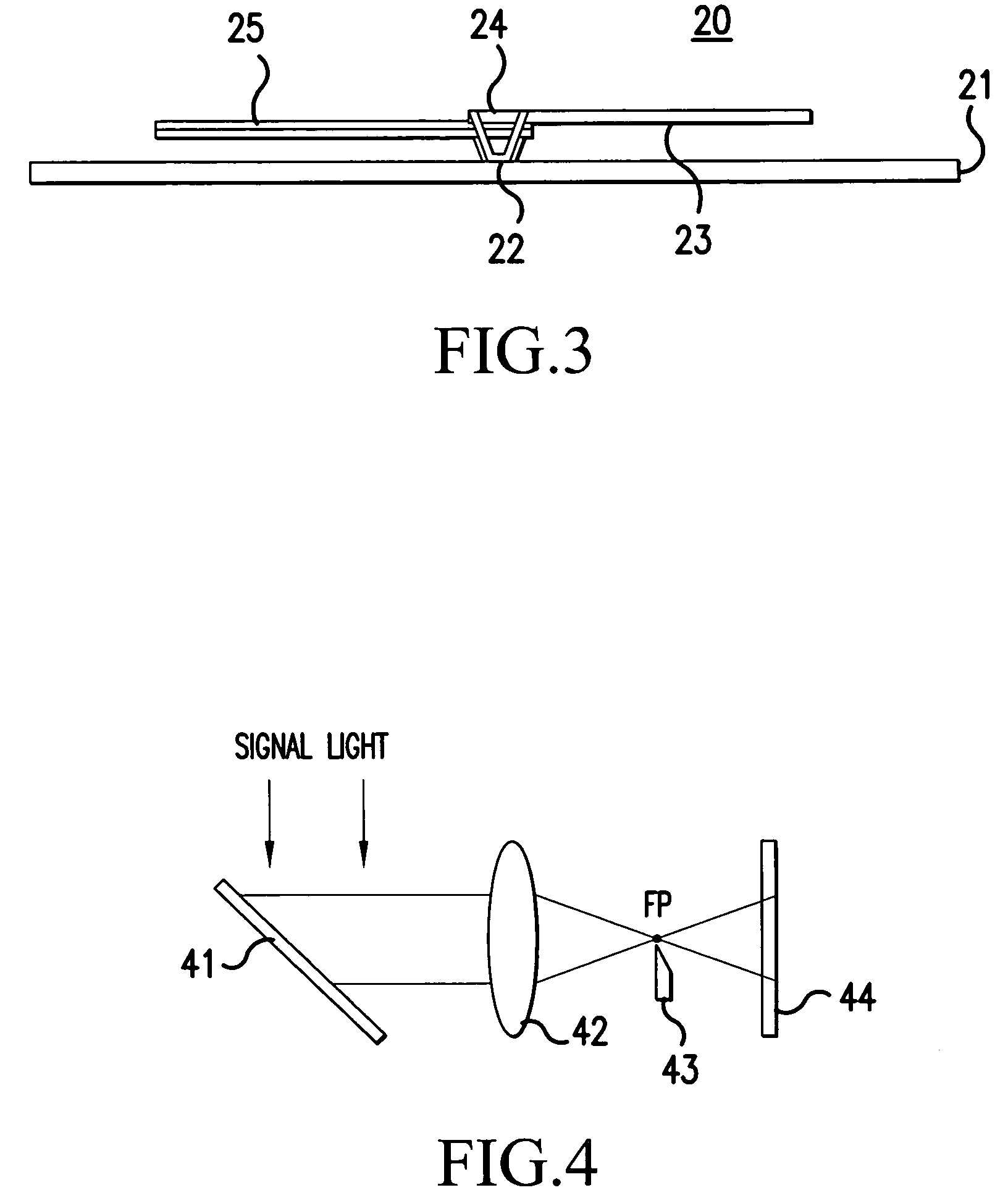Passive broadband infrared optical limiter device based on a micro-optomechanical cantilever array
a micro-optomechanical and cantilever array technology, applied in the field of infrared optical limiters, can solve the problems of high incident fluence threshold, optical limit behavior begins, and there are no known rsa or multi-photon solutions that can be used in the mid ir and lwir regions
- Summary
- Abstract
- Description
- Claims
- Application Information
AI Technical Summary
Benefits of technology
Problems solved by technology
Method used
Image
Examples
Embodiment Construction
[0014]One of the goals of the present invention is to protect an infrared device such as a LWIR camera against damage from continuous wave (CW), broadband radiation, such as radiation from the sun. The present invention, however, is not limited to LWIR devices, and it is suitable for use with mid IR devices. Because of the high temperature and brightness, continuous wave radiation can be more harmful to the detector than a pulsed, narrow bandwidth laser. On the other hand, because of its high temperature, the continuous wave radiation has a hundred times more energy in the visible and near IR spectrum than in the mid IR or LWIR region. So the approach of this invention is to use the energy from visible and near IR region to operate the limiter in the LWIR or mid IR.
[0015]Referring now to FIG. 1, the main component of the infrared limiter of the present invention is a microfabricated cantilever 10 and a mirror 11. The microcantilever 10 includes strips 12, 13 of different materials t...
PUM
 Login to View More
Login to View More Abstract
Description
Claims
Application Information
 Login to View More
Login to View More - R&D
- Intellectual Property
- Life Sciences
- Materials
- Tech Scout
- Unparalleled Data Quality
- Higher Quality Content
- 60% Fewer Hallucinations
Browse by: Latest US Patents, China's latest patents, Technical Efficacy Thesaurus, Application Domain, Technology Topic, Popular Technical Reports.
© 2025 PatSnap. All rights reserved.Legal|Privacy policy|Modern Slavery Act Transparency Statement|Sitemap|About US| Contact US: help@patsnap.com



